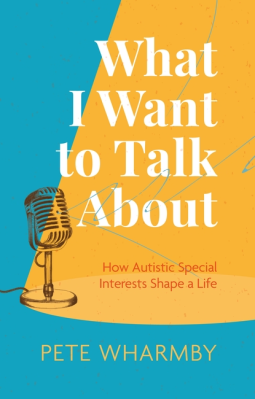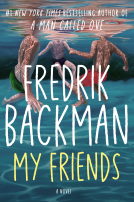
What I Want to Talk About
How Autistic Special Interests Shape a Life
by Pete Wharmby
This title was previously available on NetGalley and is now archived.
Send NetGalley books directly to your Kindle or Kindle app
1
To read on a Kindle or Kindle app, please add kindle@netgalley.com as an approved email address to receive files in your Amazon account. Click here for step-by-step instructions.
2
Also find your Kindle email address within your Amazon account, and enter it here.
Pub Date Sep 21 2022 | Archive Date Oct 14 2022
Talking about this book? Use #WhatIWanttoTalkAbout #NetGalley. More hashtag tips!
Description
'This book isn't a memoir. It is a love letter to the phenomenon of autistic hyperfixation.'
In What I Want to Talk About popular autism advocate Pete Wharmby takes readers on a journey through his special interests, illuminating the challenges of autistic experience along the way. Funny, revealing, celebratory and powerful in equal measure, this is a book that will resonate with many, and which should be required reading for anyone who wants to understand autism with more accuracy and empathy.
Available Editions
| EDITION | Other Format |
| ISBN | 9781787758278 |
| PRICE | £13.99 (GBP) |
| PAGES | 224 |
Featured Reviews
What an insightful and informative peek into the mind of someone with autism. I’ve always wanted to be able to try to understand more about the internal workings of those with autism. And I feel like this book was beyond informative while being entertaining at the same time. I recommend this to anyone wanting to expand their knowledge and empathy.
Thank you to NetGalley and Jessica Kingsley Publishers for the advanced copy.
 Reviewer 946157
Reviewer 946157
First of all, I’m glad the author got the opportunity to talk about the things he wants to talk about! I strongly relate to his feeling of how you hardly ever find others who are as interested in your interests as you are, so it’s great that he got this opportunity to share his interests with others who will (hopefully) be just as interested.
This book is a perfect illustration of how special interests (or hyperfixations, as the author calls them) intertwine themselves with everything else in your life. In my experience, that’s been one of the most difficult aspects of special interests to explain to non-autistic people: how my brain wants to relate everything back to those interests, and how it finds connections between my interests and seemingly unrelated things. I loved how Wharmby was able to describe various important events in his life through the lens of his interests. It was cleverly done, and helped me share in his enthusiasm.
Every time I read a book by another autistic person, I’m amazed by the experience of reading about thoughts and experiences like mine, which is not something I’m used to. Even when we’re different in significant ways, there are still core feelings and experiences that so many of us share. The explanation in this book of what it’s like to learn how to mask as a child resonated deeply with me, and felt like I was reading my own thoughts in someone else’s work. I cherish the opportunity to learn what I have in common with other autistic people, and will be recommending this book to my autistic friends for that reason alone.
I also appreciate seeing where our experiences and perceptions don’t overlap, and how those differences can illuminate blind spots. At one point, the author imagines how his life might have been easier if his special interests had been more acceptable and less nerdy (like sports instead of Warhammer). But my experience is that you can have perfectly acceptable interests and still be ostracized for them if you don’t talk about them in the “right” way or are low in the social hierarchy. This got me thinking about some of my own assumptions about how my life might have been different if my autistic traits and interests manifested differently.
The only issue I had with the book is I felt some of the generalizations were a bit too broad. For the most part, Wharmby does a good job reminding the reader that there’s a vast spectrum of autistic experiences, but he sometimes leaned a bit too heavily into assumptions that “many” or “most” autistic people shared his feelings about certain things. For example, the introduction states that “an autistic person’s interest in a Hyperfixation will never tire or dwindle,” even though this isn’t true even of his own experiences, much less every autistic person. I see so many questions and comments from other autistic people worrying that maybe they’re not really autistic because some of their traits don’t match common stereotypes or generalizations, so I think we have to be careful with broad statements about autism to avoid inadvertently excluding others.
I recommend this book to autistic readers wanting to share common experiences. I think it’s also a good book for helping non-autistic people look past the stereotypes and get to know an autistic person in a more nuanced way.
Readers who liked this book also liked:
L.M. Montgomery, Crystal S. Chan, Kuma Chan
Children's Fiction, Comics, Graphic Novels, Manga, Teens & YA
Silvia Moreno-Garcia
Historical Fiction, Literary Fiction, Sci Fi & Fantasy
Riki Wilchins, Clare Howell
Biographies & Memoirs, LGBTQIAP+, Parenting & Families










